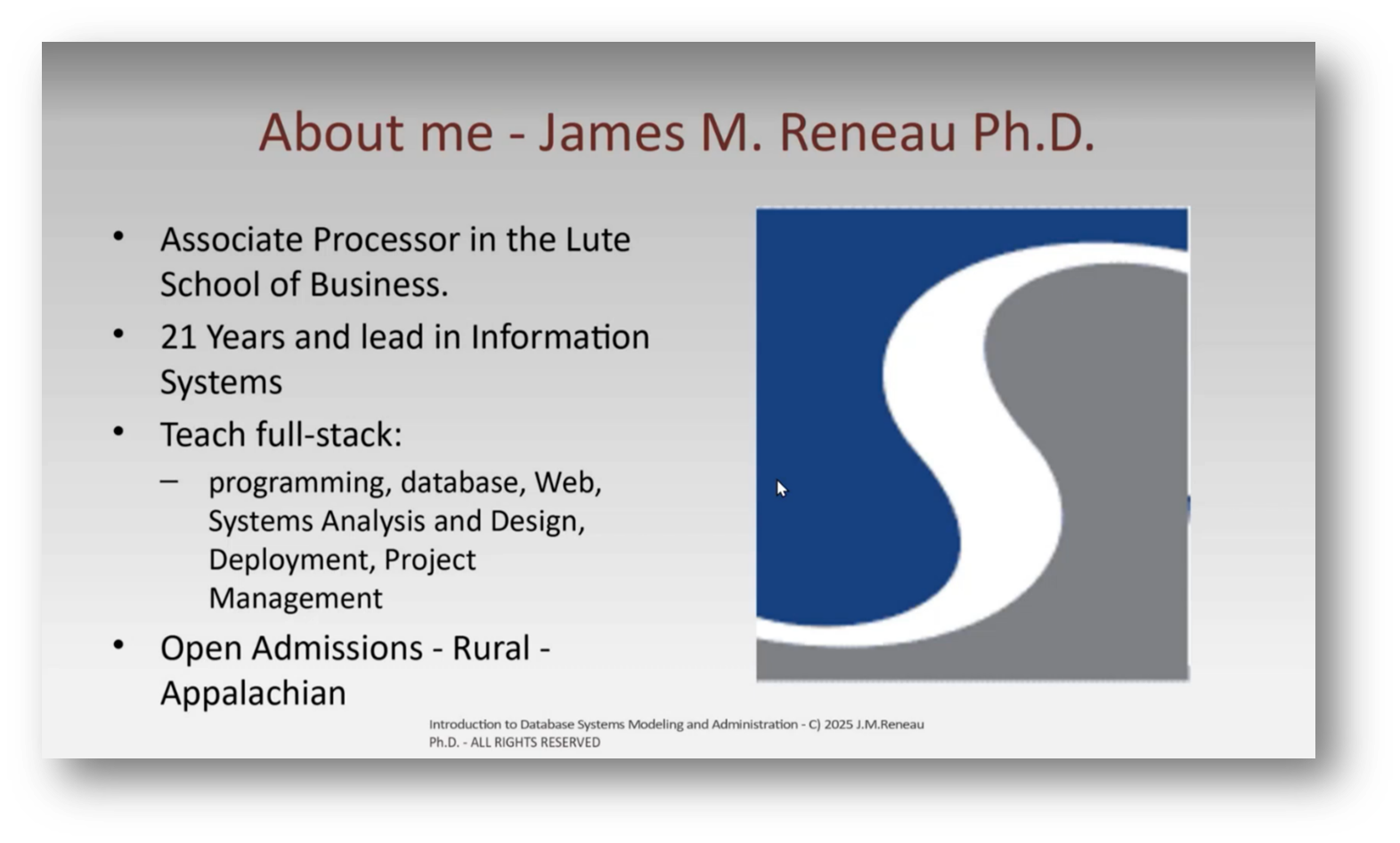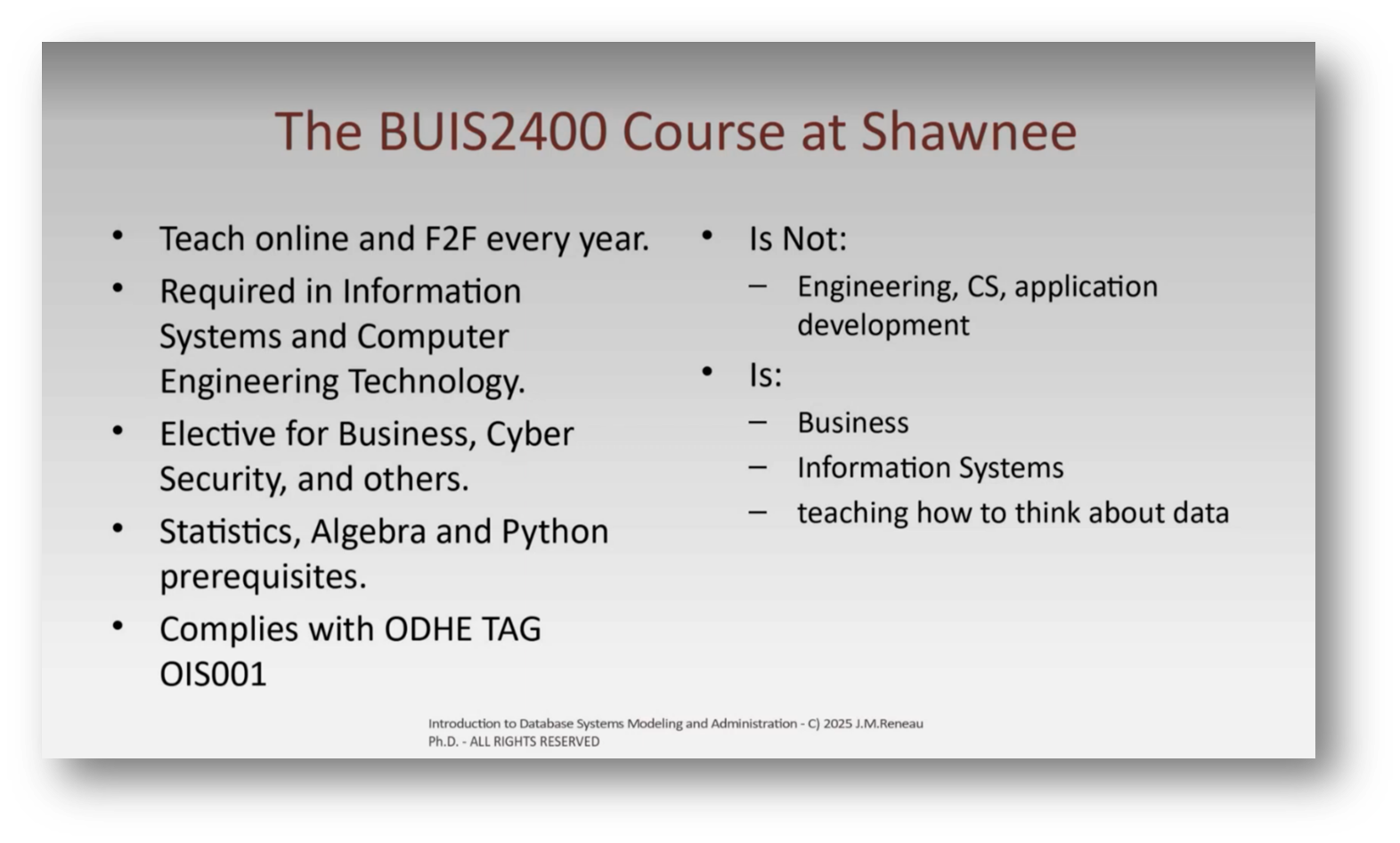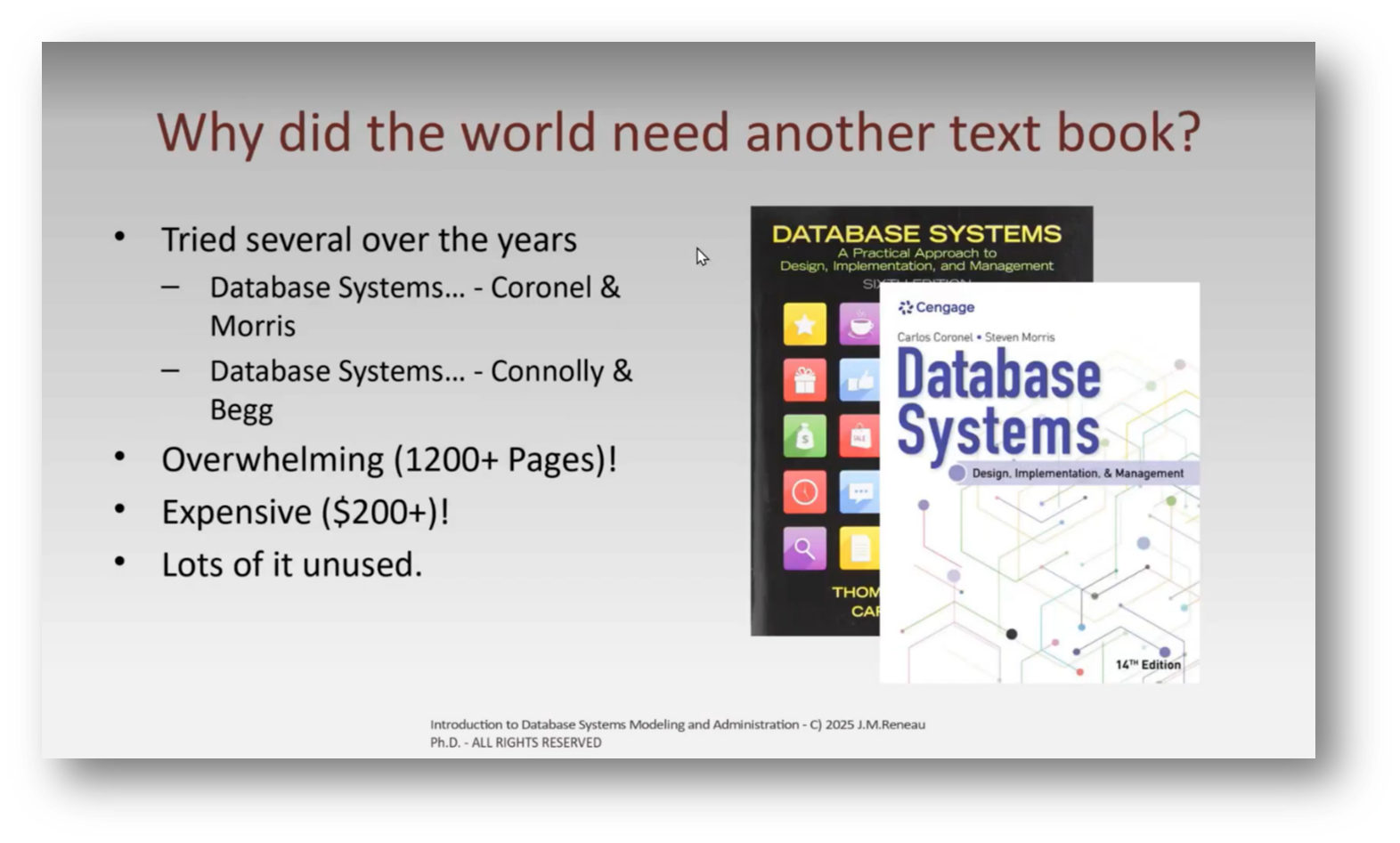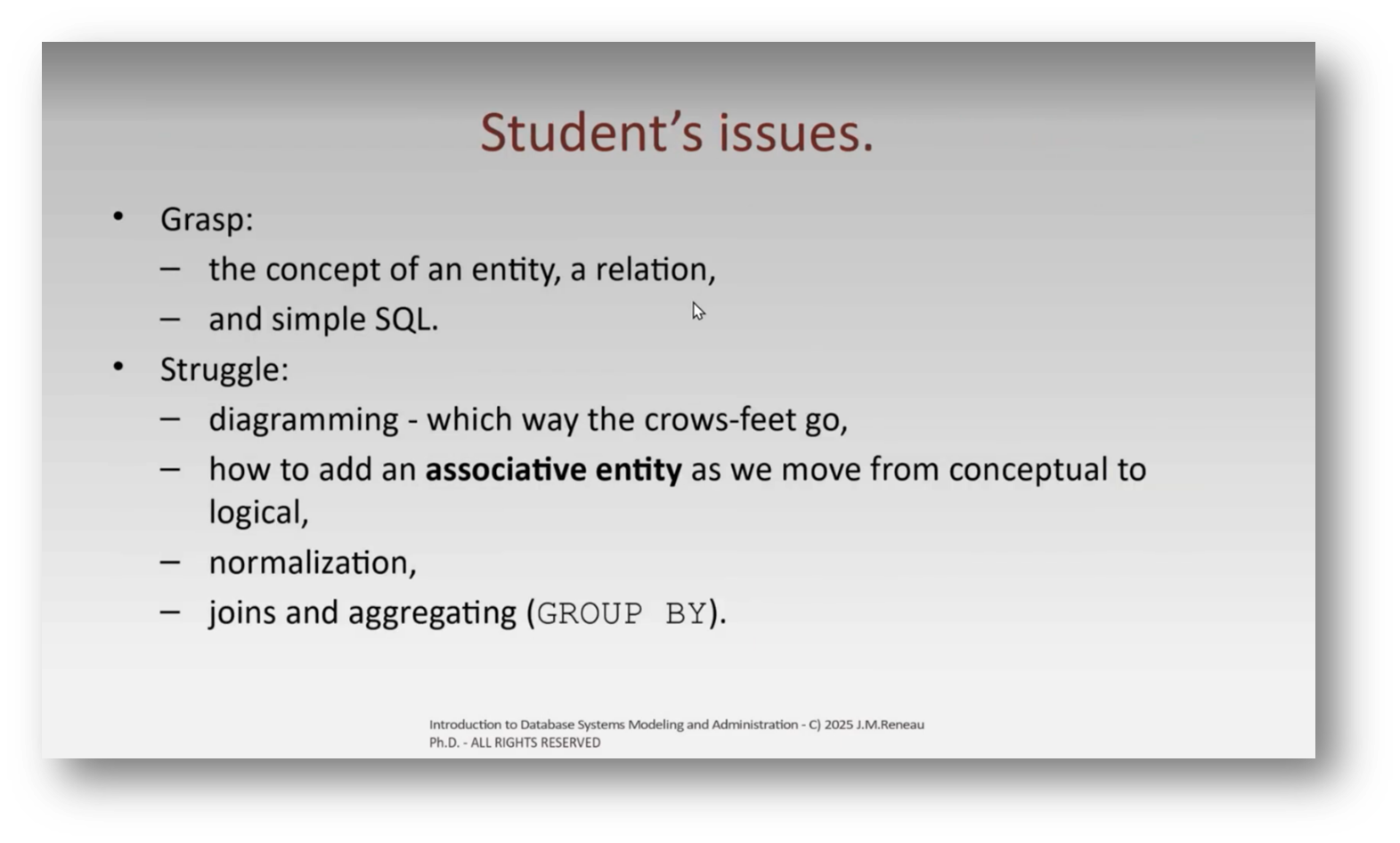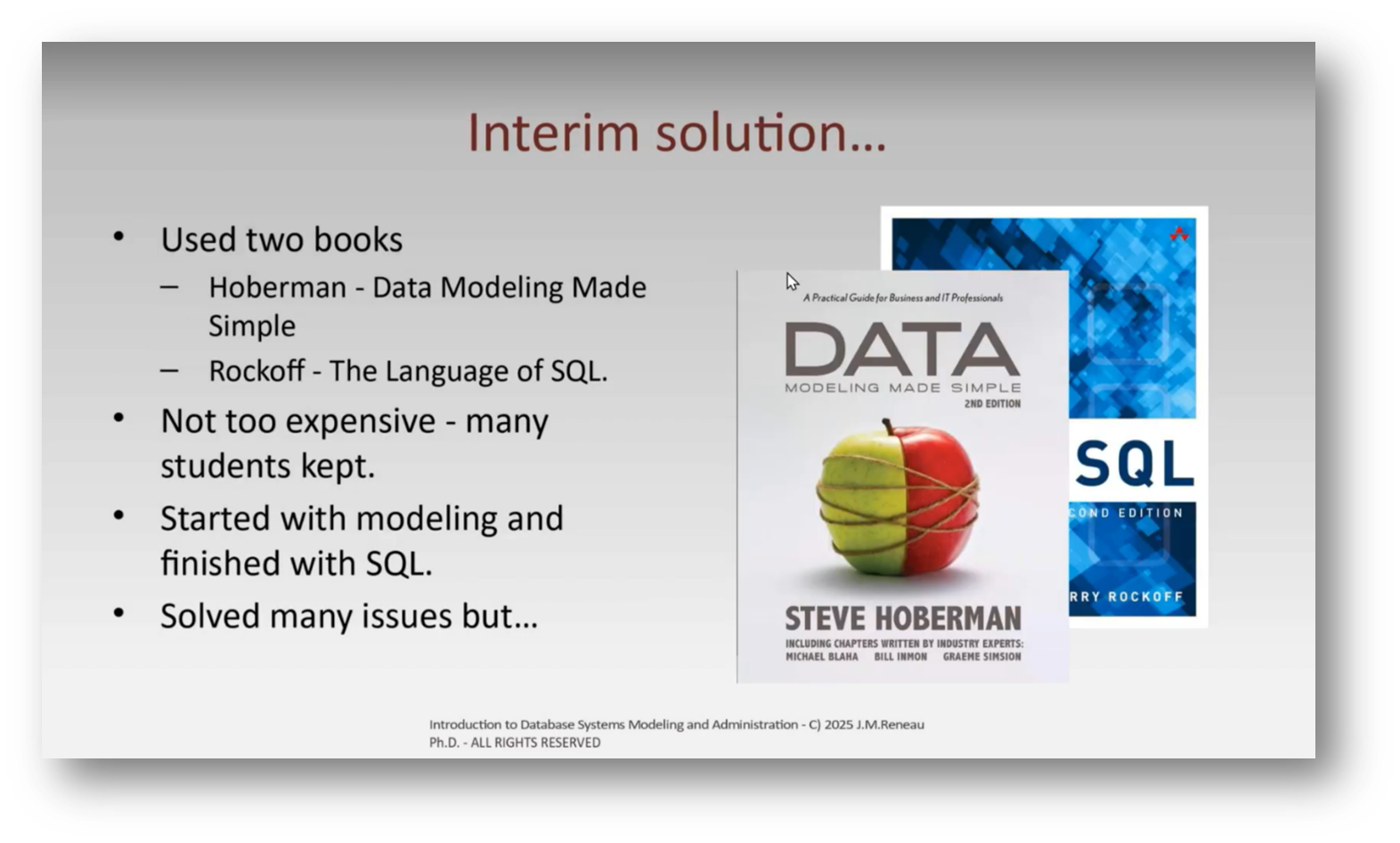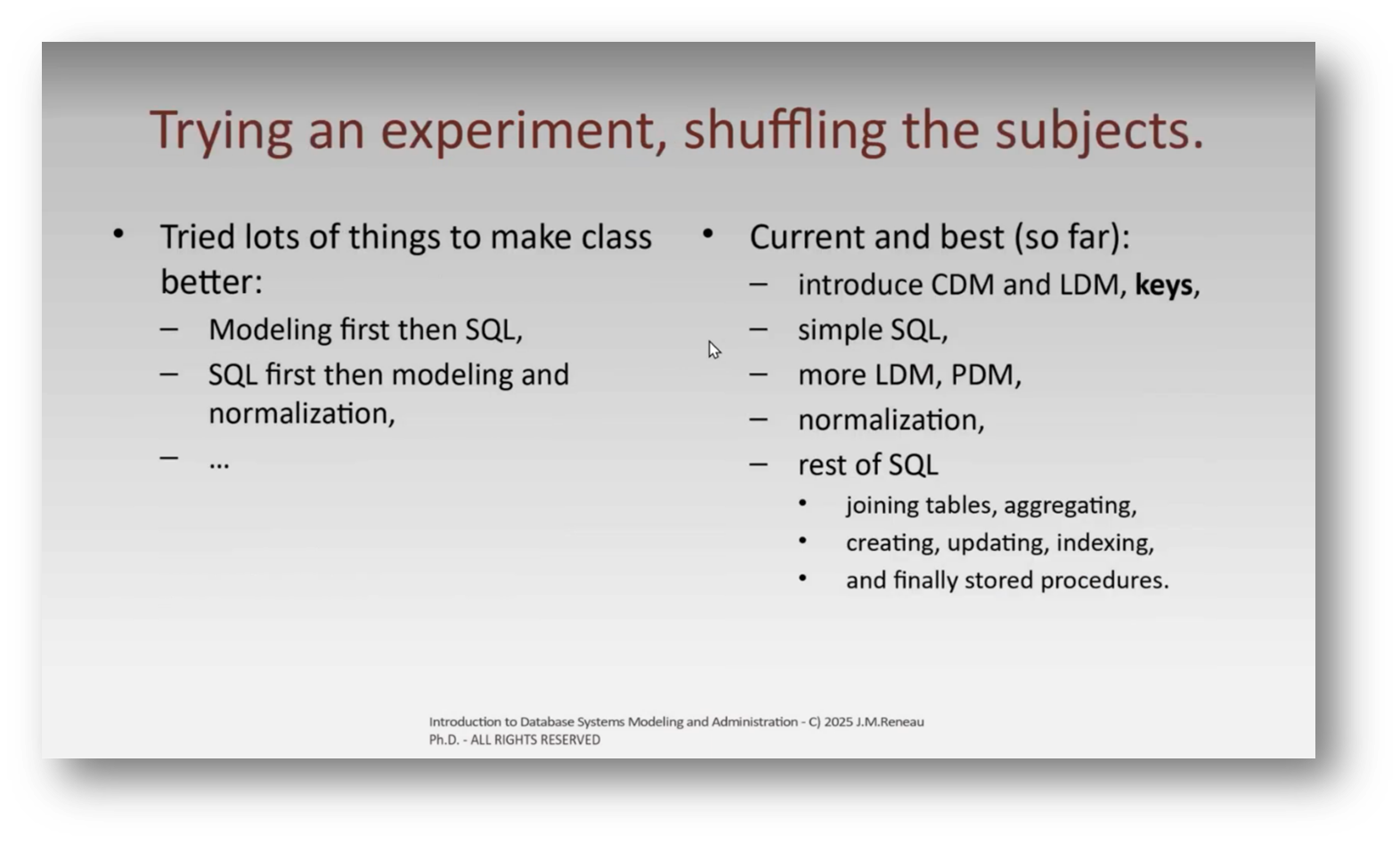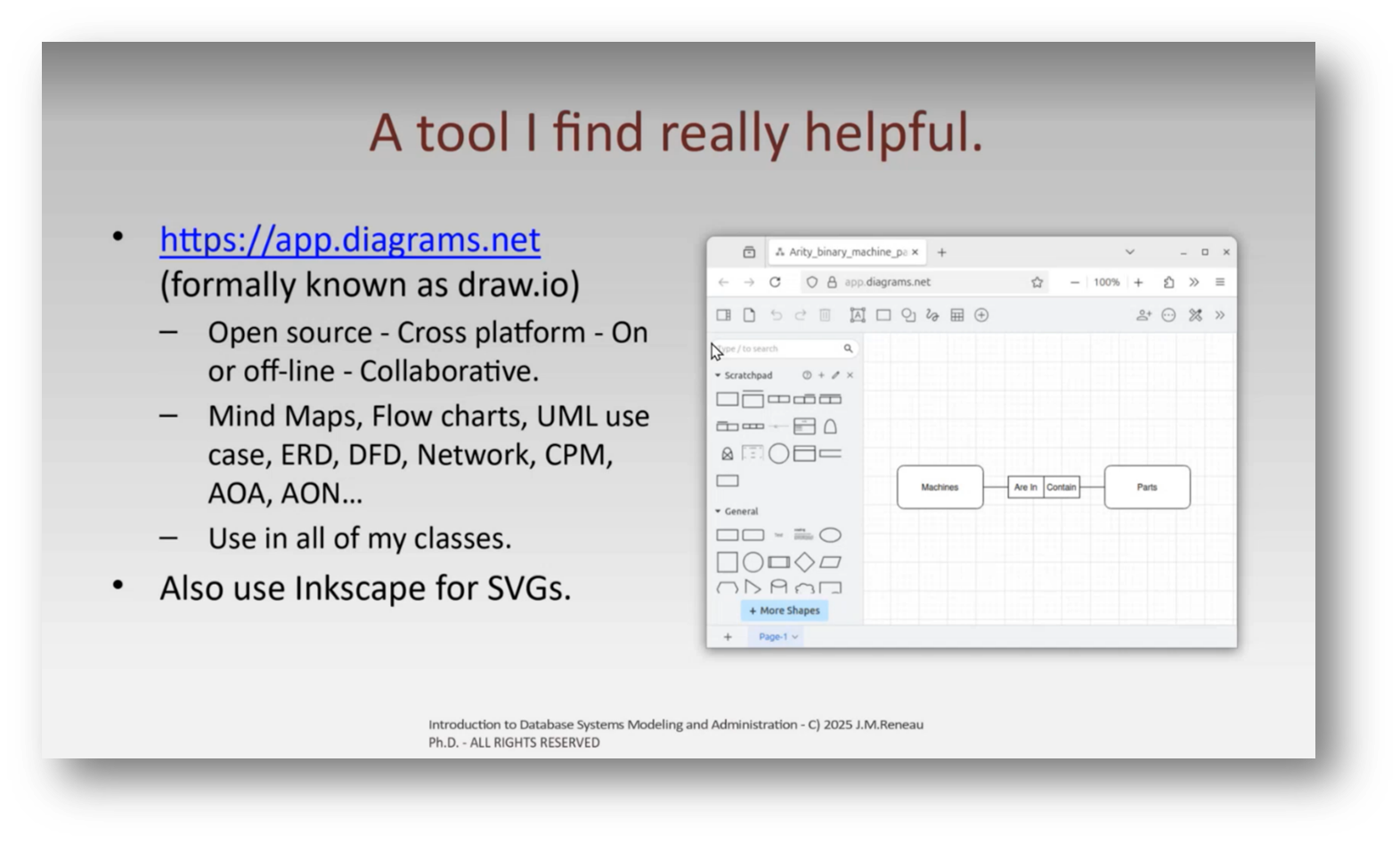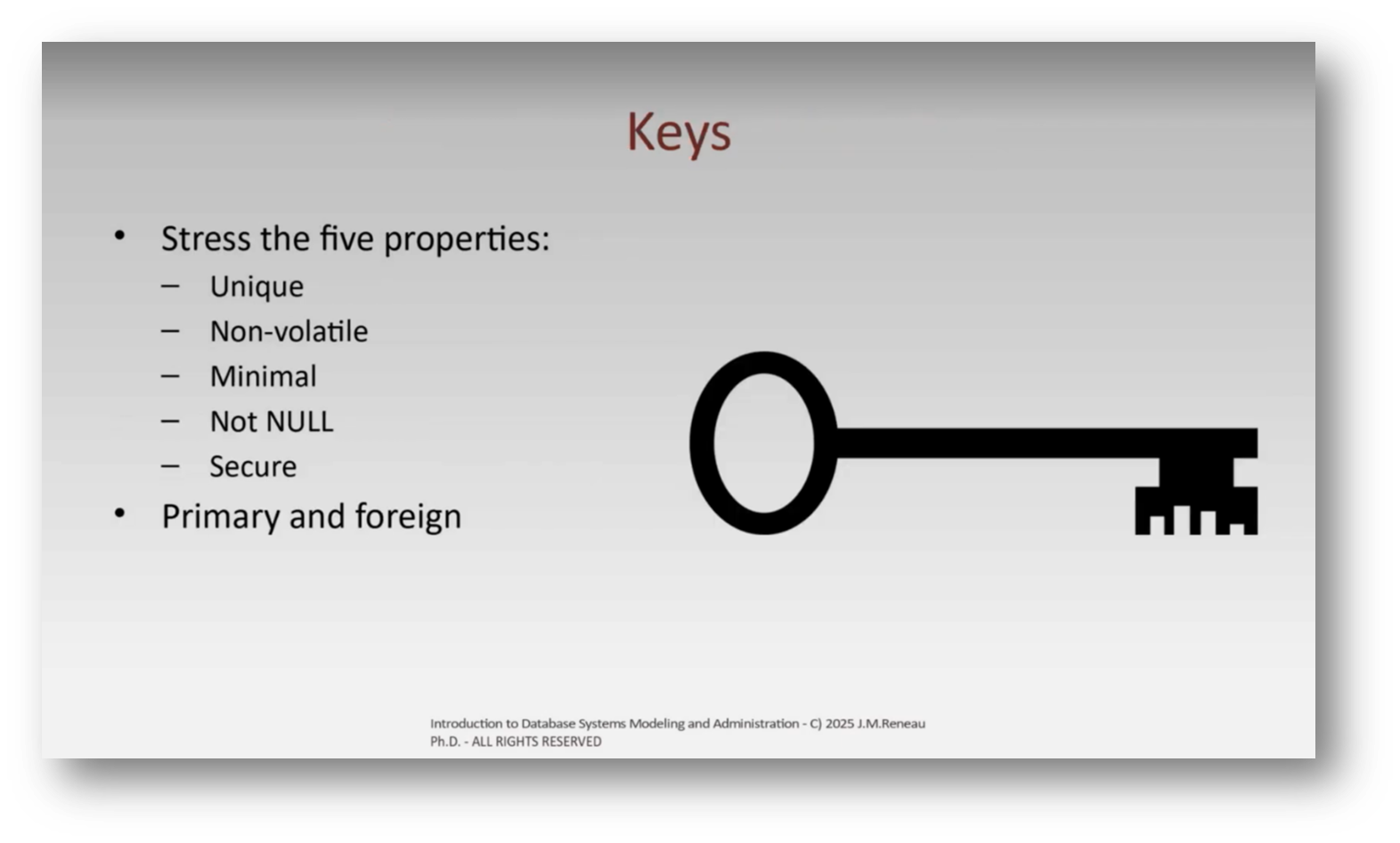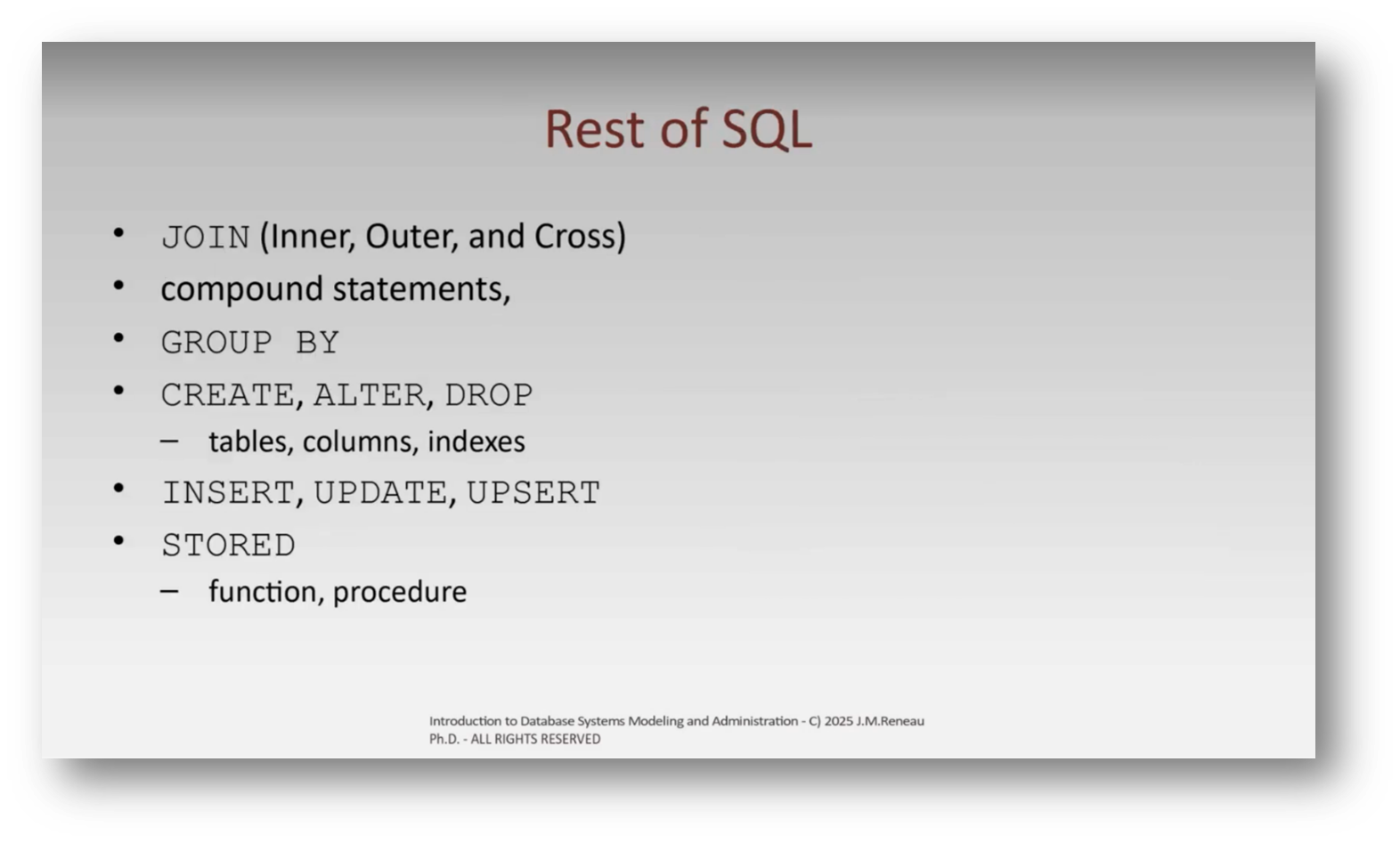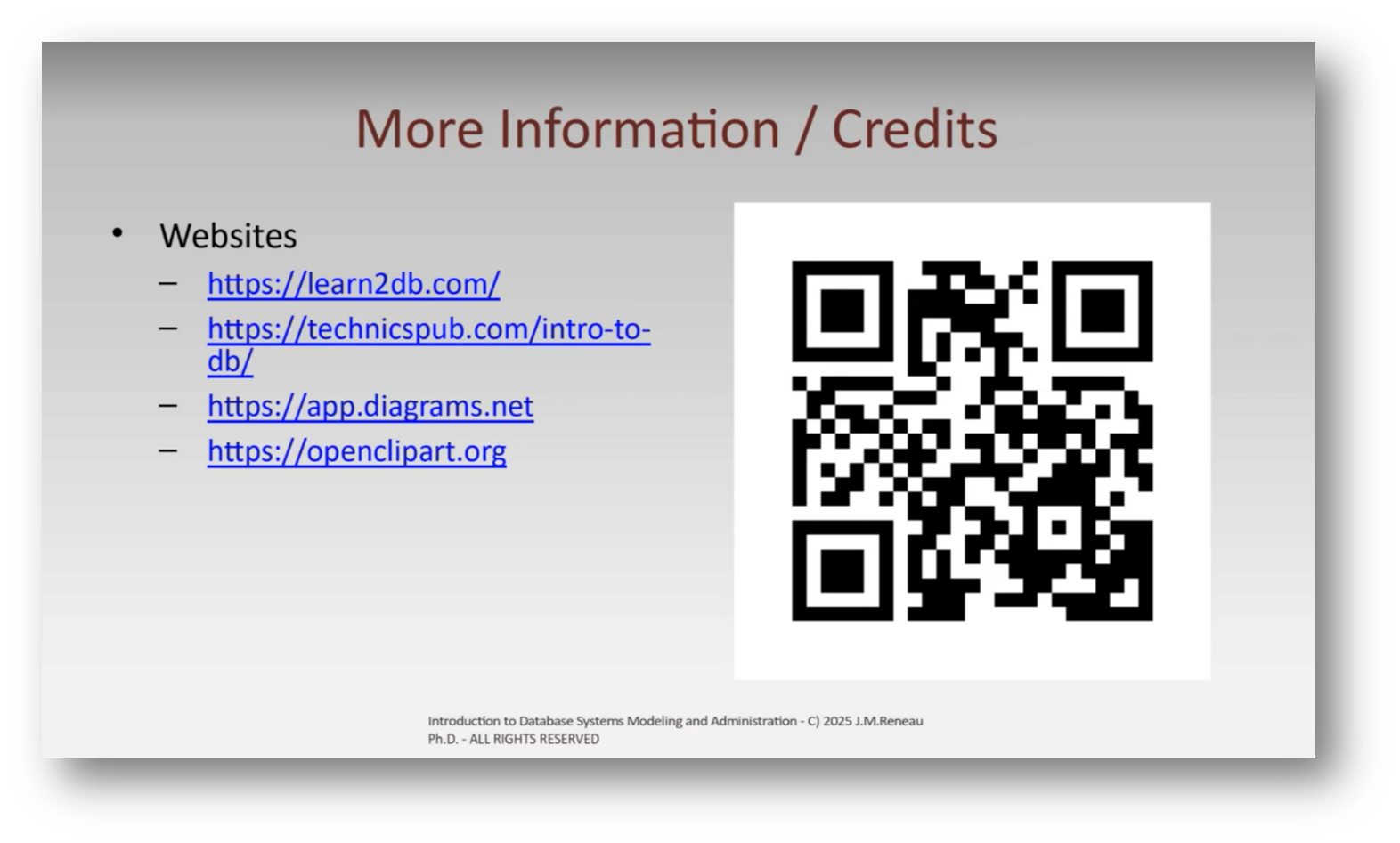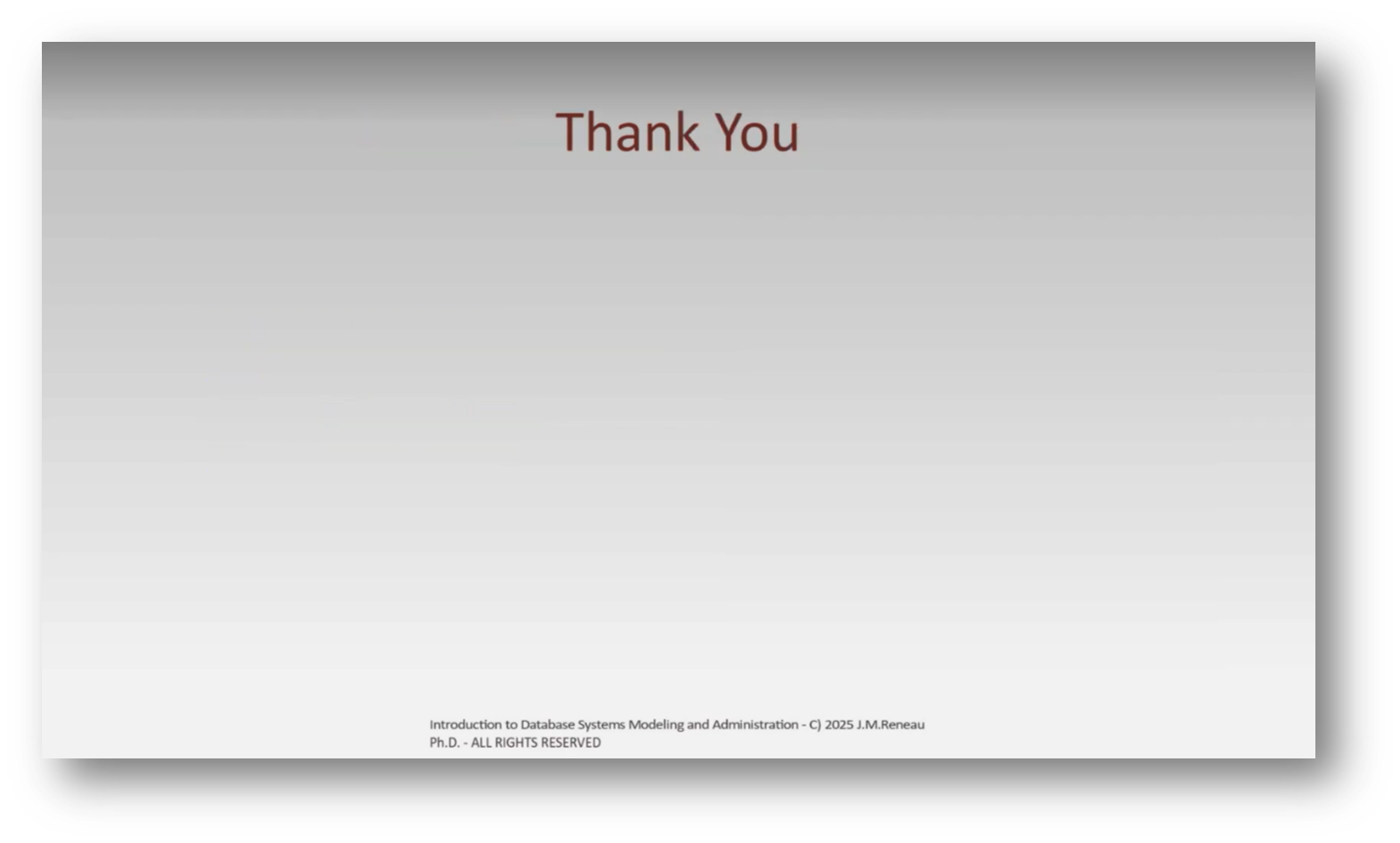Teaching Intro to Database Modelling & Administration for Undergrads with Jim Reneau
Executive Summary
This webinar highlights the insights of Jim Reneau on various crucial aspects of database systems modelling and administration within higher education. It outlines the challenges and solutions encountered in teaching data courses, including the implementation of database transfer courses and the evolving landscape of data modelling and SQL instruction. Jim Reneau emphasises the significance of interdisciplinary collaboration, practical applications in different countries, and the integration of tools like Diagrams.net to facilitate learning. Additionally, he addresses the importance of teaching concepts such as keys in data modelling, the nuances of logical data modelling, and the relevance of business etiquette in online education. Overall, his perspective reflects on the ongoing evolution of database normalisation and the unique challenges of engaging today's learners in a digital age.
Webinar Details
Title: Teaching Intro to Database Modeling & Administration for Undergrads with Jim Reneau
Date: 2025-08-04
Presenter: Jim Reneau
Meetup Group: INs and OUTs of Data Modelling
Write-up Author: Howard Diesel
Contents
Jim Reneau on Database Systems Modelling and Administration
Database Systems, Teaching, and the Challenges of Interdisciplinary Collaboration
A Professor's Journey: Teaching Data Courses
Database Systems and Data Management in Higher Education
Challenges and Solutions in Implementing Database Transfer Courses
The Evolution and Impact of Data Modelling and SQL Teaching
The Use and Benefits of Diagrams.net in Teaching and Learning
Data Concepts and Teaching with ORM 2
Concept and Properties of Keys in Data Modelling
Logical Data Modelling and SQL
The Evolution of Database Normalisation: A Teacher's Perspective
Challenges and Solutions in Teaching the Current Generation
Adventureworks and Employee Management
A Discussion on Data Modelling and Practicality in Different Countries
The Challenges in Teaching Data Modelling and SQL in a Digital Age
Integration of Data Modelling and Business Etiquette in Online Education
Object Role Modelling and SQL Learning Strategies
Jim Reneau on Database Systems Modelling and Administration
Howard Diesel opened the webinar and introduced the speaker, Jim Reneau, a professor at Shawnee State University, who delivered a presentation titled "Teaching an Undergraduate Introductory Course in Database Systems Modelling and Administration." After being introduced by Veronica, he shared his screen and confirmed that the presentation was visible to the audience. Jim took a moment to reset his timer before formally introducing himself and diving into the slides, briefly noting a technical issue with his mouse during the process.
Figure 1 Teaching an Undergraduate Introductory Course in Database Systems Modelling and Administration
Database Systems, Teaching, and the Challenges of Interdisciplinary Collaboration
The recent publication of "Introduction to Database Systems" by Technics Publications marks an important resource for educators this fall. With a keen desire to guide students through the material, Jim emphasised the importance of listening and engagement in helping learners grasp complex concepts. This approach not only enhances the teaching experience but also fosters a deeper understanding of database systems among students.
Teaching complex subjects like data modelling can be particularly challenging due to the limited time available, typically spanning a semester or two. Instructors must cover a broad range of topics, including data modelling concepts, SQL, critical thinking, and diagram illustration, often within a fast-paced schedule of 7 to 15 weeks.
To effectively navigate this constraint, it's essential to focus on providing students with foundational definitions and hands-on experience, allowing them to build on their knowledge in the future. Additionally, the importance of having team members with strong teaching abilities is emphasised, as technical expertise alone is not sufficient for effective knowledge transfer.
Accelerated training programs, particularly boot camps, offer a highly effective learning model for students with advanced qualifications and substantial professional experience. These programs are particularly beneficial for individuals like master's graduates with a decade of experience in coding and data modelling, as they provide an opportunity to enhance their existing skills in a condensed timeframe. Moreover, the collaborative environment fostered in these boot camps helps build camaraderie among participants, which can lead to improved learning outcomes. Overall, for those who already have a solid foundation, these accelerated programs can significantly refine and elevate their expertise in the field.
Figure 2 Teaching an Undergraduate Introductory Course in Database Systems
Figure 3 Introduction
A Professor's Journey: Teaching Data Courses
Jim, an associate professor at the Shawnee School of Business, has dedicated 21 years to teaching an introductory data course at Shawnee State University, where he actively engages with a student body of approximately 3,600 individuals in a region facing significant economic challenges. He is deeply committed to enhancing his teaching methods and is eager to learn from the experiences of other educators, particularly those who teach undergraduate or early graduate students and young professionals who may lack prior experience in the subject. Through this collaborative approach, Jim aims to create a more effective learning environment that addresses the unique needs of his students.
Acknowledging the absence of a universal best practice in teaching, Jim highlighted the importance of recognising diverse learning styles and encouraged discussions around better practices in education. Notably, he pointed out that nearly a third of incoming students in the School of Business require remedial math courses due to the university's open admissions policy.
Many students entering college are unprepared for the academic demands, with a significant number enrolling in remedial writing courses. This lack of foundational knowledge poses challenges for educators. Despite these difficulties, a low faculty-to-student ratio, typically with classes under 20 students, allows instructors to develop close relationships and effectively understand their students' needs.
Beginning his programming journey at the young age of 12 with a TRS-80 Model 1, Jim later explored the capabilities of an Atari and developed a fondness for a Prime computer while pursuing higher education. By the age of 13, he had already made significant contributions to the field by writing actuarial software for a local insurance agency and gaining firsthand experience as an intern at a company utilising Microdata systems. Overall, Jim's lifelong passion for technology and education is evident in both his professional choices and the impact he has on his students.
Reflecting on his experience of the PIC operating system, Jim shared that it was developed in the early 1970s by McDonnell Douglas Aircraft Company, is a multi-value, non-relational database that enables users to handle complex document structures effectively. Its design allows for comprehensive data retrieval, where a single read can access all dimensions of a customer record, including multi-values and subvalues, making business applications easier to manage. The transition to relational databases proved challenging for users accustomed to the intuitive and flexible nature of document databases like PIC, which facilitated seamless data interactions.
Figure 4 About me
Database Systems and Data Management in Higher Education
BUIS2400 offers a comprehensive introduction to database systems, emphasising relational databases and SQL. The course is a crucial component for students majoring in information systems and computer engineering technology, while also serving as an elective for students in other business fields, such as cybersecurity. Additionally, the course occasionally attracts math students, which is particularly enjoyable for Jim, as he holds an undergraduate degree in mathematics. Overall, BUIS 2400 provides valuable skills and knowledge for a diverse range of students.
The course is thoughtfully structured to equip students with essential data skills, requiring a foundational understanding of statistics, algebra, and Python. Aligning with the Ohio Department of Higher Education's Transfer Acceptance Guide ensures a seamless transition for students seeking to deepen their knowledge. While it may not delve into the complexities of engineering or computer science, it effectively conveys the fundamental concepts of data and highlights its significance in business decision-making. Ultimately, this course serves as a vital stepping stone for students aiming to thrive in a data-driven landscape.
Jim emphasised the critical need for equipping students with communication skills that bridge the gap between technical and business domains within information systems. This is achieved through a curriculum focused on business information and data analysis, which is grounded in the Data Management Body of Knowledge (DMBoK) framework that defines essential knowledge areas.
By structuring the coursework around the required learning outcomes established by the state of Ohio, students are ensured a level of transferability to other universities. Jim underscored the significance of applying DMBoK principles, especially in data modelling, to create a standardised and accessible resource that enhances students' learning experience.
Figure 5 The BUIS2400 Course at Shawnee
Figure 6 OHI Department of Higher Ed - TAG/CAG
Challenges and Solutions in Implementing Database Transfer Courses
The state of Ohio has implemented voluntary guidelines that facilitate the transferability of courses between institutions. One such course has been designed to align with the Database Transfer Acceptance Guide. As the sole Information Systems professor in my department, I teach three universal courses in the state: Database Management, Systems Analysis and Design, and ISIT Project Management.
Jim shared that his course explores the role of databases and data management systems in organisational contexts, covering topics such as historical development, conceptual data modelling, normalisation up to the third normal form, SQL transactions, stored procedures, data security, risk management, data validation, and trigger procedures. Given the extensive content to cover in either an online or face-to-face format, the question arises: Why do we need another textbook?
The BUIS2400 course places a primary emphasis on relational modelling to meet state requirements for advanced database studies. The instructor not only focuses on relational data but also integrates discussions on other modelling types, such as document-based and NoSQL, during individual student interactions and specialised projects to broaden students’ learning experiences. Additionally, the need for a new textbook was underscored, as previous resources were often excessively lengthy—over 1,200 pages and around $200—while failing to adequately address key topics such as SQL and data modelling. This gap in comprehensive and accessible content can hinder undergraduate students’ ability to effectively grasp essential database concepts.
In a master's level general database course, it would be feasible to expect students to engage with comprehensive materials; however, at the undergraduate level, students often struggle with fundamental concepts, such as entities and their relationships. While they can typically understand the definition of an entity and recognise one-to-one, one-to-many, and many-to-many relationships, they tend to find the diagramming of these relationships, particularly the directionality indicated by crow's feet, challenging. Although they can grasp simple SQL syntax, such as a SELECT statement, without much difficulty, they generally require more time and practice to develop the skills necessary for effectively diagramming and iterating database designs, whether on paper or using software.
Many students aged 18 to 21, fresh out of high school, face challenges with fundamental concepts in data management, such as applying basic addition and grasping complex relationships, like those between many-to-many and one-to-many entity associations. This struggle highlights a gap in their preparedness for higher-level coursework, which can hinder their academic progress. Interestingly, approximately one in five or eight of these students returns later in life as non-traditional learners, including veterans who contribute valuable perspectives to the classroom. This diverse range of experiences can enhance classroom discussions and bridge the knowledge gap for younger students.
Jim highlighted the unique challenges that Students face with concepts such as normalisation, the iterative process of data handling, and executing joins and aggregations. Recognising that existing textbooks fall short in addressing these difficulties, the speaker is committed to developing a new teaching approach tailored to these specific needs. This initiative aims not only to enhance students' understanding but also to make the learning experience more effective and engaging.
Figure 7 Why did the World need another Text Book?
Figure 8 Student’s Issues
The Evolution and Impact of Data Modelling and SQL Teaching
About a decade ago, Jim discovered Steve Hoberman's "Data Modelling Made Simple," which transformed my understanding of data modelling into an accessible and enjoyable experience. It feels more like a novel than a textbook, making it a perfect resource to share with managers or anyone unfamiliar with the topic. Accompanying this book, Jim also found value in Larry RockOff's SQL book, which conveniently covers MySQL, Oracle, and Microsoft SQL Server simultaneously. This cross-database approach ensures that students can retain the book for future reference, no matter which database they choose to work with later on.
The use of two affordable SQL books, priced at $30 each, has both benefits and limitations in an educational setting. While these books attracted many students who preferred to keep them, the course structure—beginning with data modelling and concluding with SQL—helped address some learning challenges but fell short of completely resolving all issues. A notable criticism of these resources is their lack of traditional textbook features, such as structured assignments and lecture guidance, which could enhance the learning experience. Overall, while the books are accessible and popular among students, their limitations highlight the need for more comprehensive instructional resources.
Jim emphasised the necessity for business graduates in information systems to balance theoretical knowledge with practical skills. He highlighted the importance of these graduates being able to communicate effectively with technical experts while retaining a broad understanding of the field rather than becoming overly specialised. By doing so, he aims to prepare students for the collaborative nature of the industry, ultimately enhancing their effectiveness in various roles.
In the realm of data modelling, Jim emphasised the importance of accessible concepts over complex theories. Frustrated by the shortcomings in existing resources, he frequently utilised straightforward tools such as Venn diagrams to effectively convey his ideas. Recognising a gap in the materials despite his discussions with the largely unresponsive author, Steve, Howard saw an opportunity to enhance the approach to data modelling.
With the decision to take the initiative in creating a new textbook, Jim communicated with Steve, who agreed to review it when it was finished. Motivated by his experiences in teaching with the current resources, Howard began writing about a year ago, focusing on reorganising the material for better clarity and understanding. In doing so, he hopes to bridge the gaps he and Jim identified, providing a more effective learning resource for future students.
Jim’s teaching experience has led him to develop a structured approach for introducing data concepts that enhances student learning. He discovered that starting with modelling or SQL, each presented unique challenges; students often struggled with normalisation and joins depending on the order of instruction. To address these issues, Jim implemented a curriculum that begins with foundational concepts, such as conceptual and logical data models, keys, and simple diagrams, over the first four weeks of a 14-week semester. This groundwork is then complemented by a two-week segment on basic SQL, which includes simple SELECT statements, ordering, and basic arithmetic functions. Ultimately, this strategic sequencing enhances students' understanding of data concepts and improves their overall learning experience.
BUIS2400 structure effectively introduces students to SQL and essential database concepts, ensuring a comprehensive understanding of these foundational skills. Initially, students gain exposure to tables, which sets the stage for emphasising the importance of normalisation in database design. This theoretical groundwork is seamlessly integrated with practical applications, such as joins and aggregation, enabling students to engage actively with relational data. By blending theory with hands-on practice, this curriculum model has demonstrated its effectiveness in teaching complex concepts in a way that fosters both understanding and application.
Figure 9 Interim Solution
Figure 10 Trying an Experiment, Shuffling the Subjects
The Use and Benefits of Diagrams.net in Teaching and Learning
Diagrams.net, also known as draw.io, stands out as a versatile and user-friendly tool for creating a wide range of diagrams, such as mind maps, flow charts, UML use cases, and ERDs. Its free and open-source nature significantly enhances the learning experience in my courses by providing a consistent and accessible platform without the need to introduce multiple tools each time. While some concerns have been raised by students, Jim believes that it remains the best option available for meeting our diagramming needs.
The tool enables easy shape creation, allowing users to draw shapes using an SVG tool and import them into the program. It also features dynamic connectors that automatically adjust when shapes are moved, making it an excellent choice for developing business-related diagrams.
Figure 11 A Tool I Find Really Helpful
Figure 12 Conceptual Data Modelling
Data Concepts and Teaching with ORM 2
In his approach to teaching conceptual data modelling, Jim prioritised clarity by choosing ORM 2 over Crow's Feet notation, as recommended in the latest DMBoK (Data Management Body of Knowledge) materials. He emphasised the use of simple shapes commonly found in most drawing tools to illustrate varying levels of fidelity in modelling. This method not only aids understanding but also enhances students' ability to grasp complex concepts more effectively.
In the early stages of discussions with managers or clients, a simple representation utilising simple data model diagrams can effectively convey fundamental ideas. Jim highlighted the utility of ORM 2, which is particularly adept at defining unary, binary, and ternary relationships. For example, he illustrated how a person can own a vehicle, multiple individuals can collectively own vehicles, and these vehicles can be classified into distinct categories, such as automobiles, trucks, or motorcycles. Overall, this approach enables a clear and structured understanding of complex relationships as projects evolve.
The clarity of a diagram related to Object-Role Modelling (ORM) 2 is crucial for effectively illustrating concepts such as exclusive subtypes and the one-to-many relationship between parties and their ownership of vehicles. To enhance understanding among students, it is advisable to use the term "party" rather than "entity," as the latter may create confusion regarding the ownership dynamics between entities. Although the term "party" could be subject to misinterpretation in certain contexts, particularly in relation to cannabis culture in the U.S., it ultimately provides a clearer framework for educational purposes. In conclusion, adopting the term "party" can facilitate better comprehension of ORM concepts among learners.
Figure 13 Keys
Concept and Properties of Keys in Data Modelling
Effective teaching of conceptual modelling requires a dedicated focus on the five critical properties of keys: uniqueness, non-volatility, minimality, non-nullability, and security. In a recent discussion, Jim highlighted the importance of these properties, referencing Steve Hoberman's "Data Modelling Made Simple" (version 2), and advocated for the inclusion of the security aspect in the upcoming third edition. By using relatable examples such as student ID numbers and Social Security numbers, Jim helped students understand the concept of candidate keys and the necessity of selecting the optimal option.
Jim highlighted the critical connection between primary and foreign keys in database design, stressing that the current edition of Hoberman's work may overlook certain essential topics related to these keys. By exploring these properties in greater depth, students can deepen their understanding and better prepare for real-world applications in data modelling. Ultimately, dedicating time to these fundamental concepts is essential for fostering a comprehensive grasp of database organisation.
Logical Data Modelling and SQL
In the realm of logical data modelling, various notations are utilised, with the crow's feet notation being the most prevalent in the industry, as observed through consulting experiences and advisory committee feedback. While some practitioners prefer the chin model or the use of Object-Relational Mapping (ORM), crow's feet remains widely adopted due to its effectiveness and familiarity among professionals. Additionally, discussions on fidelities and related concepts are integral to the learning process in this field.
The key to effective data modelling lies in consistency, regardless of the specific styles, diagrams, or formats used. It is essential for teams, including developers, designers, and administrators, to adopt a common approach to sharing data and models, as this fosters clear communication and collaboration. A particular challenge for students learning about one-to-many relationships is understanding the directionality of crow's foot notation; they often misinterpret it.
To aid comprehension, diagrams can be annotated to clarify relationships, such as illustrating that an animal belongs to a species, while a species encompasses multiple animals. For instance, the example of a dog named Fido and a cat named Bubba effectively demonstrates this concept, and the diagrams can be created using tools like draw.io.
In the introductory SQL session, students develop a strong foundation in data retrieval, with a primary focus on the SELECT statement and its key features. They learn important skills such as selecting all columns, using column aliases, and performing basic arithmetic operations after establishing a foundational understanding of logical data modelling. With their background in Python programming, students quickly understand Boolean logic and the ORDER BY clause, which enhances their ability to formulate more complex queries.
Incorporating aggregate functions, such as COUNT, SUM, MIN, and MAX, into the curriculum is essential for students as they lay the groundwork for understanding SQL. By mastering these fundamental calculations, students can build confidence and prepare themselves for more advanced topics. This thorough approach not only facilitates a smoother transition into complex aggregation but also enhances their overall data analysis skills.
Figure 14 Logical Data Modelling
Figure 15 Simple SQL
The Evolution of Database Normalisation: A Teacher's Perspective
In the course, Jim focuses on building a solid foundation in SQL before delving into the important concept of normalisation. He introduces key aspects such as atomicity, dependencies, partial dependencies, and transitive dependencies, urging students to memorise and articulate the definitions of different normalisation levels. By reviewing the characteristics of the first, second, and third normal forms, Jim ensures that students grasp the significance of primary keys and atomic data. This structured approach not only enhances their understanding of database design but also prepares them for more advanced topics in data management.
Practical exercises involve modelling and converting real-world data into database formats, and Jim shared that he would dedicate two full weeks in a 14-week session to normalisation practices, utilising whiteboard demonstrations and YouTube videos to reinforce these concepts. Through repeated exposure and hands-on activities, my goal is to foster a deep understanding of normalisation, a topic Jim learned in my undergraduate studies in the 1980s.
During his undergraduate studies, Jim encountered the challenges of learning database concepts in an environment that was less than ideal. His professor, Dr. Rogers, often reminded Jim of the Charlie Brown school teacher due to his unique delivery, which made the lectures memorable, albeit difficult to engage with. At that time, the campus relied on a Prime Information system featuring a PIC-style database, and Jim's experience involved working on an IBM I connected to a System/360 at the University of Kentucky, where he programmed in COBOL and FORTRAN.
This lack of access to a relational database rendered the concept of normalisation particularly abstract and disconnected from any practical application. Ultimately, Jim shared that the experience highlighted the limitations of traditional database education and the importance of hands-on learning in making theoretical concepts more relatable.
When teaching his students essential skills, Jim focuses on gradually introducing concepts to ensure a solid foundational understanding. He emphasised reaching what he terms "3rd normal," which is adequate for most business scenarios, before moving on to more complex topics. Once they achieve this foundational level, Jim shared that he would then guide them through advanced subjects, such as joins (including inner, outer, and cross joins), compound statements with embedded SQL, and various database operations, including create, alter, drop, insert, update, and upsert.
Jim's educational approach focuses on integrating stored procedures, stored functions, and transactions to build a solid foundation for his children. By presenting these topics in a logical sequence, he helps them gain a deeper understanding and confidence in their abilities. Ultimately, this structured method prepares them to tackle future challenges in the business world with assurance and competence.
Figure 16 Normalisation
Figure 17 Rest of SQL
Challenges and Solutions in Teaching the Current Generation
The generational differences between today's students and older generations present unique challenges for educators. Jim, reflecting on their experiences in their late 50s, humorously compares their youthful spirit to that of a 12-year-old. They observe that current students, heavily influenced by technology—such as Google, AI, smartphones, TikTok, and Instagram—exhibit shorter attention spans and struggle to engage in meaningful group interactions. As a result, teachers must navigate the complexities of a classroom where students struggle to disconnect from their devices. Ultimately, understanding these differences is crucial for educators seeking to connect with and inspire the younger generation.
In the university cafeteria, Jim noticed a dozen students sitting in silence for half an hour, completely absorbed in their devices. This scene highlights a troubling trend that the COVID-19 pandemic has intensified, as many students who lacked adequate socialisation during their formative high school years are now facing significant challenges in developing essential interpersonal skills. As a result, the impact of prolonged digital engagement on social dynamics is becoming increasingly evident among young adults.
Jim highlighted the crucial distinction between being a mere user of technology and being an innovative creator. He pointed out that while many students may perceive themselves as tech-savvy, they often fall short in terms of the creativity and deeper understanding necessary to truly engage with technology. This raised an important challenge for educators: how to effectively teach and cultivate these essential skills in students, ensuring they can leverage technology in innovative ways.
Students' relationship with technology often parallels a driver's familiarity with their car; while many are proficient users, they frequently lack a deeper understanding of the underlying mechanics. This analogy highlights the importance of relational modelling in education, as it encourages students to go beyond surface-level usage and develop a more comprehensive grasp of technological concepts. By engaging with these models, students can foster a hands-on approach that enhances their understanding and empowers them to interact more effectively with technology.
The educational system in the U.S. is increasingly criticised for prioritising standardised testing over the development of individual creativity and critical thinking skills. Jim highlights that many students, labelled as "perfect sheep," may excel in recalling facts but often find it challenging to generate original ideas or solutions.
To address this pressing issue, Jim emphasises the importance of exploring strategies that encourage creativity, enhance communication skills, and promote adaptability among students. By engaging in discussions and sharing experiences, we can collectively develop effective solutions to enhance the educational landscape and better prepare students for the complexities of the modern world.
Figure 18 Notes and Personal Reflection
Adventureworks and Employee Management
The comparison between Microsoft’s Adventureworks and the Northwind database illustrates the significant advantages of advanced data management tools. Adventureworks, as a comprehensive database, offers a wide array of models and data that enhance its functionality, while the more basic Northwind database serves as a simpler alternative. An attendee highlighted Adventureworks' superior features but also underscored the critical role that effective data management plays in optimising employee management practices. As such, leveraging robust data tools is essential for organisations aiming to improve their operations and employee performance.
Figure 19 More Information / Credits
Figure 20 Thank You
A Discussion on Data Modelling and Practicality in Different Countries
The differences in educational approaches between Europe and the U.S. reveal significant implications for student preparedness in handling complex subjects, such as data modelling. In Europe, the emphasis on theoretical understanding lays a strong foundation before practical application, whereas American education tends to prioritise hands-on execution, often at the expense of grasping the underlying principles.
This disparity is particularly evident in the Netherlands, where concerns have been raised that students may not acquire essential skills due to a curriculum that favours tool training over comprehensive foundational knowledge. As a result, many students develop a complacent mindset regarding data complexity, mistakenly believing they can manage with limited experience, only to encounter challenges when their projects falter due to inadequate modelling practices. Ultimately, addressing these educational gaps is crucial for equipping students with the necessary skills to succeed in an increasingly data-driven world.
The Challenges in Teaching Data Modelling and SQL in a Digital Age
The engineering technology department, which focuses on applied engineering rather than traditional engineering school concepts, previously taught SQL through a semester-long boot camp that also included a basic introduction to Python application development. However, with the retirement of the key professor, students were redirected to Jim, who emphasises the importance of modelling throughout the learning process.
Jim effectively enhances student understanding of SQL by utilising a diverse range of teaching methods. He incorporates visual aids and diagrams while promoting a blend of visual, oral, and kinesthetic learning styles. This comprehensive approach not only caters to different learning preferences but is also reflected in his book, which aims to further enhance students' SQL skills. Ultimately, Jim's teaching strategy ensures that all students can grasp complex concepts more effectively.
Training individuals in data modelling for the CDMP specialist exams presents unique challenges, especially for those accustomed to dimensional models. Many students struggle with the foundational concepts of entity-relationship (ER) diagrams due to a lack of prior experience, which complicates their ability to effectively use tools like Power BI and Power Query.
This misunderstanding can result in issues like circular references, highlighting the importance of a solid foundational understanding of data modelling before diving into practical applications. Jim emphasised a desire to equip trainees with essential skills that foster professional growth and consultancy without fostering vendor lock-in, aiming to prepare them for successful careers in the evolving data landscape.
Many students at an open-admission, rural Appalachian university face significant challenges in engaging with traditional learning methods. These challenges are largely attributed to their preference for electronic communication, a tendency that creates barriers due to their limited access to high-speed internet and the fact that English is not their native language. Furthermore, these difficulties are exacerbated by their poor writing skills, which often result in low-quality emails and written assignments. Overall, addressing these issues is crucial to enhancing student engagement and academic success in such learning environments.
Research suggests that students who take notes by hand retain information more effectively than those who rely on digital methods, as evidenced by the fact that students often photograph whiteboards during lectures. The importance of effective communication skills is also emphasised, especially in business contexts where negotiated contracts are crucial.
Effective client engagement often requires face-to-face interactions to thoroughly understand their needs. For instance, being present in the UAE for a client demonstrates the importance of physical presence in building strong relationships. There is a growing need to shift the mindset of younger professionals towards more direct, personal interactions, as many are struggling with remote communication. This challenge is not unique and is being faced by various industries globally.
Integration of Data Modelling and Business Etiquette in Online Education
Jim emphasised the critical role of student engagement in both online and classroom settings, highlighting the need for interactive learning experiences that enhance understanding. Furthermore, Jim introduced a new seven-week business etiquette course designed to equip students with essential professional skills, including effective greetings and handshakes. Overall, the School of Business is committed to innovative teaching methods that prepare students for successful careers in today's competitive landscape.
Object Role Modelling and SQL Learning Strategies
The discussion on object role modelling (ORM) highlighted its usefulness as a diagramming technique for teaching SQL and data modelling. An attendee raised concerns about the relevance of ORM, suggesting it might represent a different approach. Jim clarified that ORM is primarily used for conceptual modelling, illustrating entities and their relationships—such as unary, binary, and ternary—without getting lost in the complexities of ORM itself.
The use of Object-Role Modelling (ORM) in data modelling, as highlighted in DMBoK version 2, offers a clear and accessible approach for learners. While other diagramming methods, such as Chen's or Crow's foot notation, can effectively represent similar concepts, ORM stands out for its emphasis on the fundamental principles of data modelling. Ultimately, selecting ORM not only aids in comprehension but also enhances the learning experience for those new to the field.
If you would like to join the discussion, please visit our community platform, the Data Professional Expedition.
Additionally, if you would like to be a guest speaker on a future webinar, kindly contact Debbie (social@modelwaresystems.com)
Don’t forget to join our exciting LinkedIn and Meetup data communities not to miss out!





